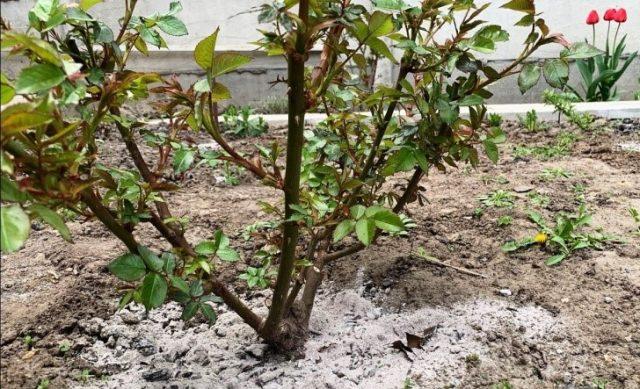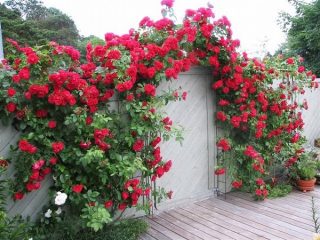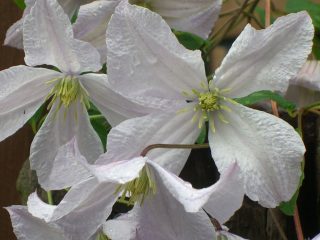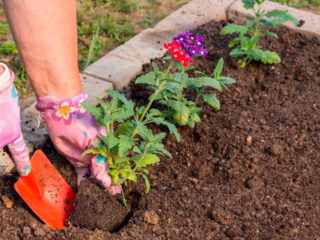Content
Ash is not just a residue from the combustion of a solid substance, but also a valuable fertilizer. Many gardeners use burned plant waste to enrich the soil. Ash, as a fertilizer for roses, contains a complex of mineral substances that have a beneficial effect on the formation and development of flower culture.

Ash is great for fertilizing rose bushes, but applying it incorrectly can harm the plant.
Is it possible to fertilize roses with ash?
Lush and long-lasting flowering of roses depends on many factors. But perhaps the most significant of them is feeding flowers. Ash is one of the commonly available organic fertilizers.
It should be noted that due to the high calcium content, ash has an alkaline pH, while for rose bushes neutral or slightly acidified soil with a pH level close to 6.5 is considered a comfortable environment. In this regard, the remains of burnt wood should be added to the soil in limited quantities and used according to the scheme worked out by agricultural technicians.
When planning a rose garden, you need to determine the pH of the soil using litmus paper. A simple analyzer can be purchased at a pharmacy or gardening supply store.In addition to litmus strips, the acidity test kit contains an insert. The indicator should be used in accordance with the attached instructions. Using litmus paper, you can reliably determine the acidity level of the soil. It is recommended to alkalize an area with too acidic soil.

Roses feel comfortable in soil whose acidity level ranges from orange to yellow-green colors of the spectrum.
What are the benefits of ash for roses?
The use of ash is necessary to fertilize the soil when there is a lack of elements contained in it. The main components of burnt plant matter that are beneficial to plant organisms are:
- potassium
- calcium;
- magnesium.
Also, a popular organic fertilizer contains phosphorus, iron, sulfur, and boron. Wood ash should be used when cultivating roses for a number of reasons:
- potassium is necessary for the formation of buds and further lush flowering;
- phosphorus promotes the development of the root system;
- boron improves the condition of leaves, activates the production of chlorophyll, making the green color rich.

Pale color and upturned edges of leaves indicate boron deficiency; ash will help compensate for the lack of microelement
Other macro- and microelements contained in wood ash increase plant immunity and help adapt to low temperatures. An equally effective way to fertilize the land is to add combustion products of plants (tops, grass, foliage, pine needles). Roses growing in acidic soils should be fed with plant ash to strengthen the tissues and produce abundant flowering.
What kind of ash can be used
Gardeners often use the remains of burnt garbage to feed plants. But not all of them think about what kind of waste is suitable for burning for further use as organic fertilizer.
Not suitable for use in crop production:
- boards with paint and varnish residues;
- old newspapers, magazines and other printed products;
- impregnated boxes;
- plastic containers.
Toxic chemical compounds found in household waste can harm plantings. Natural plant residues are best suited as raw materials. There is especially a lot of calcium in hardwood (poplar, oak, elm, ash, larch). Young wood is a valuable source of potassium, as well as ash from the roots of meadow grasses, stems of buckwheat, sunflower and other cereals.

To feed roses, it is recommended to use the ash left over from burning the tops; the potassium contained in the composition stabilizes the water balance
When to use
Ash is widely used in gardening. When caring for roses it is used:
- if necessary, when external signs of a lack of batteries appear;
- for ongoing feeding in order to stimulate shoot growth and flowering.
Initially, ash is added when planting roses.Experienced gardeners recommend adding natural fertilizer directly to the planting holes. In order for a plant to take root well, it needs nutrients, which it will receive from the soil with the help of a strong root system. The minerals contained in the substance, first of all, have a beneficial effect on the development of roots.
The optimal time for fertilizing rose plantings is the pre-growing season, which occurs in central Russia in April and early May. In the southern regions, ashes can be scattered under bushes in March. It is important to add ash to the soil in early spring so that the potassium dissolves in the water and gets into the root system. The timely entry of the element into the plant tissue is the key to the formation of full-fledged bushes, the formation of buds and long-term flowering.
In the first half of summer, the rose bush increases its vegetative mass. In this regard, the crop needs nitrogen-containing compounds. But from mid-July, nitrogen should be abandoned. To grow buds and give bright colors to flower stalks, potassium contained in the ash is needed. At the height of summer, you need to regularly feed the rose plantings with ash. In this case, you can organize both dry and wet feeding.
From mid-August, fertilizing roses with ash is not recommended. The minerals included in the natural fertilizer activate flowering on the eve of winter. Untimely appearance of buds can weaken garden plants and cause their death. Therefore, ash for roses in the fall is not only undesirable, but even harmful.
Ways to feed roses with ash
There are several options for fertilizing the soil. The choice of fertilizing method primarily depends on the pH level of the area. For acidified soil, liquid fertilizers are more suitable; for soil with indicators close to neutral, dry ash can be used.
Dry
The easiest way to fertilize is to sprinkle the soil around the roses. Another option is to use wood ash with compost. The mixture should be carefully distributed around the rose bushes.

Each bush requires 200-300 g of burned plant mass
As an infusion
If the soil on the site is acidified, then it is advisable to organize watering of roses with ash. To do this, fill the container about a third with wood ash, fill it with hot water and let it brew. After 4-5 days, the infusion is filtered to remove the white sediment - lime and the roses are watered with liquid ash at the rate of 1 liter per bush.
Ash infusions are more effective than dry formulations for two reasons:
- dissolved mineral fertilizer penetrates more easily into the rhizomes of plants along with water;
- liquid fertilizing frees site owners from watering the plantings for some time.
With the infusion you can not only fertilize the roots, but also carry out foliar treatment using a sprayer for the liquid. Work on irrigating the bush should be organized approximately once every two weeks.
In the form of a liquid solution
To completely feed roses, you can prepare a fertilizer complex: 100 g of ash is mixed with a tablespoon of urea and diluted in 10 liters of chlorine-free water until the urea is completely dissolved.A bush requires 0.5 liters of solution.
In the form of a decoction
Flower growers who have been breeding roses for a long time are convinced that it is better to use an ash decoction instead of a cold infusion. To prepare it you will need:
- 1 kg of ash;
- 10 liters of water.
The ash is poured into a metal bucket, stirred thoroughly and boiled for 20-25 minutes. To feed roses, 1 liter of working solution is diluted with 10 liters of water. Approximately 0.5 liters are poured under each bush.
The advantages of ash decoction are as follows:
- prepares very quickly;
- can be used as a base solution for preparing complete fertilizers with different compositions;
- subject to long-term storage without loss of beneficial properties.
Conclusion
Ash, as a fertilizer for roses, is used to optimize acidified soils, prevent diseases and feed bushes with minerals. Macro- and microelements included in ash solutions are necessary to strengthen plant tissues, ensure growth and lush flowering.








